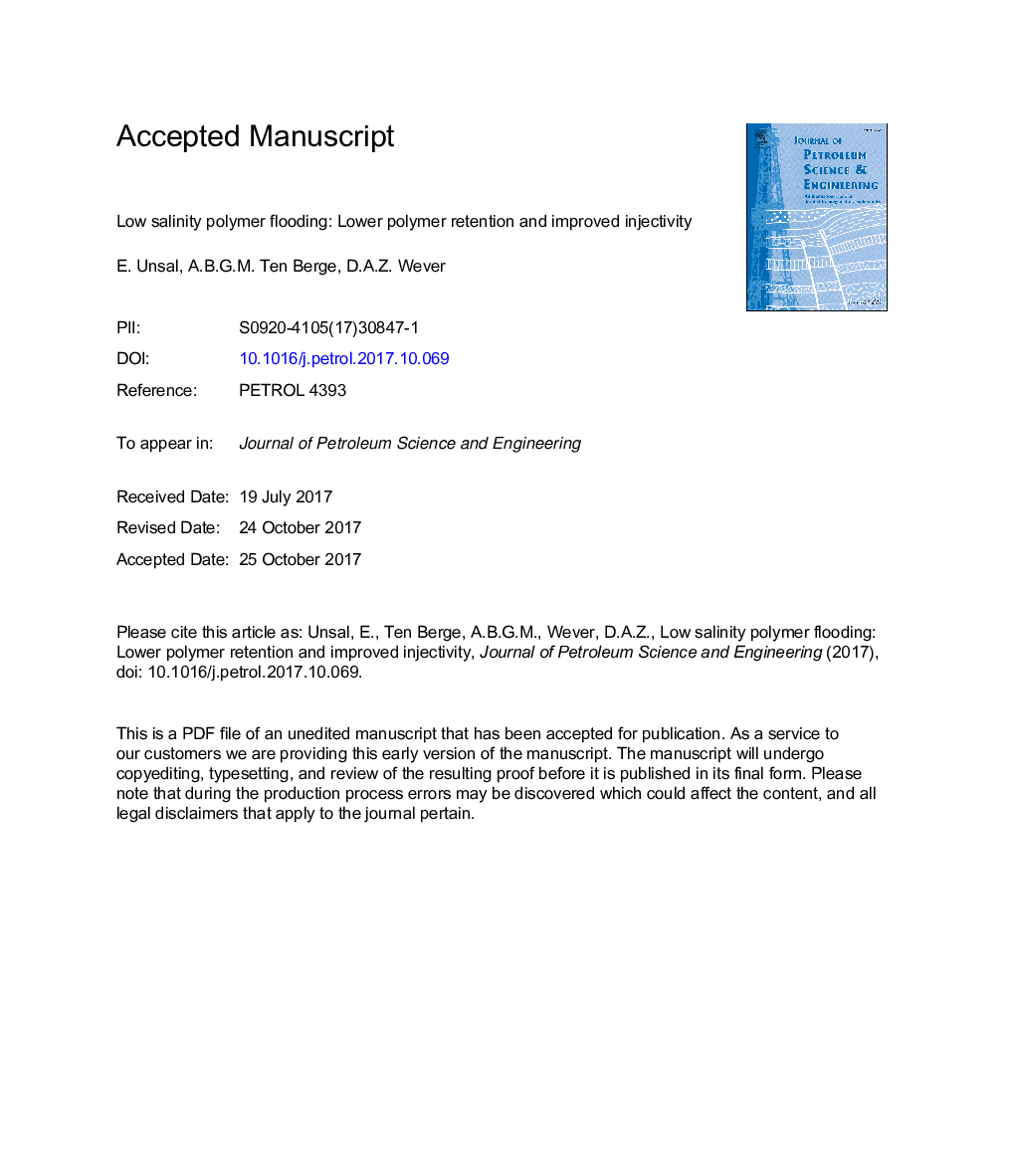| کد مقاله | کد نشریه | سال انتشار | مقاله انگلیسی | نسخه تمام متن |
|---|---|---|---|---|
| 8125395 | 1522778 | 2018 | 30 صفحه PDF | دانلود رایگان |
عنوان انگلیسی مقاله ISI
Low salinity polymer flooding: Lower polymer retention and improved injectivity
ترجمه فارسی عنوان
سیل پلیمری با کمترین میزان سدیم: کاهش میزان پلیمری و بهبود تزریقی
دانلود مقاله + سفارش ترجمه
دانلود مقاله ISI انگلیسی
رایگان برای ایرانیان
کلمات کلیدی
پلیمریل کم نگهداری، رئوئولوژی، جبرگرایی، تبادل کاتیونی،
موضوعات مرتبط
مهندسی و علوم پایه
علوم زمین و سیارات
زمین شناسی اقتصادی
چکیده انگلیسی
Delayed arrival of the oil bank and reduced injectivity are risks which are commonly associated with low salinity polymer (LSP) flooding. In this study, experimental work was carried out to address these risks; the polymer retention and the cationic exchange in the presence of polymer were the main subjects of investigation. Single phase coreflood experiments were performed, where low and high salinity polymer (HSP) solutions, i.e., conventional polymer flood using formation brine, were injected in reservoir core plugs. The performance of the two polymer solutions were analyzed for polymer retention, injectivity and polymer acceleration. Compared to the HSP coreflood, the LSP coreflood showed considerably lower polymer retention and better long-term injectivity. There was no delay in polymer breakthrough, and the polymer acceleration was comparable to HSP floods. Analysis of produced effluent of the LSP coreflood detected divalent ion concentrations higher than the injected solution, and the solution which was already in equilibrium with the rock. This suggested that the divalent ions were released from the rock into the solution because of cation exchange in the presence of the LSP solution. Such increase in divalent ion concentration increased the polymer solution salinity and resulted in a viscosity loss. The results of the experimental study indicated that LSP flooding can be an attractive alternative to conventional polymer flooding, although viscosity loss due to cation exchange is a subject for further de-risking work. A numerical model which couples the cation exchange in presence of polymer with flow dynamics in core scale has also been developed. The flow field was used to advect the polymer which influenced the equilibrium condition between the rock surface and the solution. We present preliminary results obtained using the model which can be used to gain insights and study sensitivities around different geochemistry coupled flow processes.
ناشر
Database: Elsevier - ScienceDirect (ساینس دایرکت)
Journal: Journal of Petroleum Science and Engineering - Volume 163, April 2018, Pages 671-682
Journal: Journal of Petroleum Science and Engineering - Volume 163, April 2018, Pages 671-682
نویسندگان
E. Unsal, A.B.G.M. ten Berge, D.A.Z. Wever,
